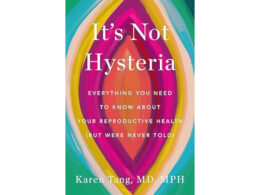In 2012, Colorado and Washington became the first two states to legalize recreational marijuana. Fast forward 12 years, and 38 states have legalized medical marijuana and 24 allow recreational marijuana use. The $33 billion dollar industry continually churns out new marijuana products, and if you live in a state where recreational use is legal, there’s no doubt you’ve seen advertisements for marijuana as a supposedly miraculous, “natural” cure for any ailment under the sun, including for nausea and vomiting in pregnant women.
But is weed really more than just a way to get high? In this article, we’ll discuss what the research does and doesn’t say about the safety and efficacy of marijuana use during pregnancy, especially for pregnancy-related nausea and vomiting and prenatal depression and anxiety.
What is cannabis?
Marijuana, now more popularly referred to as “cannabis” by the marijuana industry, goes by many other names–weed, pot, ganja, just to name a few. Technically, marijuana is part of the Cannabis sativa plant, and in this article, we’ll use the terms marijuana and cannabis interchangeably.
Importantly, marijuana contains substantial amounts of tetrahydrocannabinol (THC), a psychoactive compound which “can cause changes in mood, thoughts, and perceptions of reality,” according to the National Institute on Drug Abuse. In other words, THC is the compound responsible for the “high” people feel when using marijuana.
Note that the cannabis plant also contains another compound called cannabidiol (CBD), which is not psychoactive. Some cannabis-derived products only contain CBD, not THC, although the two compounds are related, and are collectively referred to as “cannabinoids.” This article will primarily discuss the safety and efficacy of THC in pregnancy, not CBD*.
What are the supposed benefits of medical marijuana use?
Successfully touted by staunch supporters as a non-addictive activity, marijuana use has taken off across the United States for recreational as well as medical purposes. In fact, a 2022 study published in the journal Addiction revealed that daily marijuana use in the United States now outpaces daily alcohol consumption [1]. Still, differences in marijuana’s state-by-state legality do matter: a 2022 study by the University of Colorado Boulder noted in states where cannabis was legalized, usage is 24% higher than in states where it is illegal [2].
According to Harvard Health, pain control—specifically, chronic pain—is the most common medical use of marijuana. Some studies have reported that access to legal medical marijuana is associated with decreased use of opioids (both on a statewide and individual level), the misuse and abuse of which have reached epidemic proportions in the United States [3]. In addition to chronic pain, medical marijuana is sometimes used for easing nerve pain (such as with multiple sclerosis), as a muscle relaxant (such as with Parkinson’s disease tremors), and for improving PTSD symptoms in military veterans, and decreasing nausea and vomiting associated with chemotherapy treatment for cancer (just to name a few of its current medical applications).
The notion that marijuana use could prevent nausea is well-known and has become part of pop-culture, even seen in popular “stoner movies” like “Cheech and Chong” and “Pineapple Express.” Specifically, the observed decrease in nausea and vomiting in patients treated with chemotherapy is likely what caught the attention of pregnant women who also struggle with nausea and vomiting, especially in the first trimester.
Furthermore, since cannabis is often touted or referred to as “natural” or as an “herb,” some pregnant women believe that this equates to it being safe to use in pregnancy [4]. In fact, an estimated 34-60% of pregnant women continue to use marijuana even after finding out they are pregnant, no doubt due (at least in part) to the perception that cannabis products are safe because they are natural [5].
The limited research supporting medical marijuana use during pregnancy
Those in favor of using marijuana to treat nausea in pregnancy frequently cite this study, unsurprisingly published in the Journal of Cannabis Research [6]. It found that for the four (yes, just four) participants with Hyperemesis Gravidarum (HG)—a pregnancy complication occurring in about 3% of pregnant women causing severe nausea and vomiting—their quality of life score doubled after taking cannabis.
Another pro-cannabis Canadian study looked at 84 women, 40 of whom were pregnant and used medical marijuana to treat nausea and vomiting. It found that out of those 40 pregnant women, 92% reported that marijuana use improved their condition [7].
Cannabis is the most commonly used drug for pregnant women
Despite the paucity of evidence of marijuana’s benefits for pregnant women, and even though—according to ACOG—marijuana smoke contains many of the same problematic toxins as cigarette smoke (but in higher concentrations), “almost 70% of marijuana dispensaries [in Colorado] recommended products to pregnant women to treat nausea without obstetrician consultation” [8].
Still, cannabis is the most commonly used drug for pregnant women in the country with 7.2% of pregnant women having reported using it in 2021 [8].
Still, cannabis is the most commonly used drug for pregnant women in the country with 7.2% of pregnant women having reported using it in 2021 [8]. Some studies have noted that when looking at young urban women who are socioeconomically disadvantaged, that number may increase to between 15% to 28% [8]. While this number may seem high, the real number is likely even higher due to underreporting because of the cultural stigma around drug use (especially in pregnancy). Still, cannabis is the most commonly used drug for pregnant women in the country with 7.2% of pregnant women having reported using it in 2021 [8].
As with any product pushed by a multi-billion dollar industry, a closer look at the independent research is needed to see if the benefits are worth the risks.
Marijuana use and pregnancy-associated nausea
A 2014 study in the Hawai’i Journal of Medicine and Public Health gathered data from 4,735 pregnant women over a period of 3 years [9]. 2.6% of the women self-reported marijuana use during pregnancy. 21.2% reported severe nausea in pregnancy. Interestingly, women who used marijuana during pregnancy were more likely to report severe nausea than women who did not use it (3.7% compared to 2.3%, respectively).
A 2022 study in the journal Obstetrics and Gynecology of 9,250 pregnant women found that those who reported moderate-to-severe nausea were more likely to report marijuana use. By testing the urine samples of these women for the compound THC-COOH (11-nor-9-carboxy-delta-9-tetrahydrocannabinol), a marker of cannabis exposure, and comparing the results with reported levels of nausea, researchers found that “higher THC-COOH levels were associated with greater odds of moderate-to-severe nausea (20.7% in the group with THC-COOH detected vs 15.5% in the group with THC-COOH not detected” [10]. The researchers concluded, “While cause and effect cannot be determined, the association between cannabis use and nausea is clinically important. Patients may be insufficiently treated for nausea and may seek other options including cannabis. Alternatively, cannabis may result in nausea of pregnancy, especially with heavy use.”
“While cause and effect cannot be determined, the association between cannabis use and nausea is clinically important. Patients may be insufficiently treated for nausea and may seek other options including cannabis. Alternatively, cannabis may result in nausea of pregnancy, especially with heavy use.”
Obstetrics and Gynecology
Which came first: the chicken or the egg?
In other words, it’s difficult to parse out the extent to which pregnant women turn to cannabis because their nausea is severe and unrelieved by legal medications, or whether marijuana use causes nausea and vomiting in pregnant women. At a minimum, cannabis is far from a shoe-in solution for pregnancy-related nausea and vomiting. Furthermore, while it’s not specific to pregnancy, cannabinoid hyperemesis syndrome (CHS) is a known complication of long-term daily marijuana use. CHS is rare, but leads to “repeated and severe bouts of vomiting.” This may be particularly dangerous for pregnant women, and could require hospitalization.
Marijuana and mental health in pregnancy
Pregnant women don’t just turn to marijuana for nausea and vomiting relief. Given marijuana’s popular use for stress- and anxiety-relief, some pregnant women also use it, believing it will help with prenatal stress and depression.
A 2024 study published in JAMA Network Open found that out of 504 pregnant women surveyed, 236 were using cannabis [11]. 137 of those women reported using marijuana for mental health reasons, specifically for managing prenatal depression and stress symptoms. (Depression was measured using the Edinburgh Postnatal Depression Scale, while stress was measured using the Cohen Perceived Stress Scale.) Women self-reported cannabis use during each trimester along with their motives for using the substance.
Although the cannabis users in the 2024 study believed the drug would improve their depression and stress symptoms, that’s not what happened. As the researchers summarized: “We examined trajectories of depression, stress, and cannabis use from T1 to T3 and found that participants who used cannabis did not experience reduced stress or depression symptoms compared with nonusers.” Given the pervasiveness of marijuana’s use in pregnancy despite its lack of efficacy, the researchers called for increased “attentiveness to cannabis use in individuals experiencing mental health symptoms,” as well as “increased access to empirically supported and effective alternatives to cannabis during pregnancy in individuals with prenatal depression, particularly in those who report coping as a motive for their use” [11].
Early evidence suggests prenatal marijuana use increases mom’s blood pressure
A first-of-its-kind 2024 study in JAMA Network Open studied over 20,000 pregnant women who used cannabis during their first trimester [12]. Users were either self-reported (about 9,000) or identified based on urine toxicology results (about 11,000). While ACOG points out that it’s difficult to say what harmful effects marijuana specifically has since users often also smoke cigarettes and/or abuse alcohol or other drugs, the study was able to drill down to pregnant women who only used marijuana. The study’s lead author told CNN, “Pregnant individuals who used versus did not use cannabis during early pregnancy had a 17% greater risk of gestational hypertension (and) an 8% greater risk of preeclampsia.” Pregnant users also faced a 19% higher risk of placental abruption. Overall, risks were highest for daily users.
Cannabis and cardiovascular risk
A 2025 study in the Journal of the American College of Cardiology (JACC) examined the medical records of 4.6 million Americans, Canadians, and Europeans [13]. As summarized by Medscape, “Compared with people who said they did not use cannabis, those who reported using the drug had a sixfold increased risk for heart attack, a fourfold increased risk for ischemic stroke, double the risk for heart failure, and three times the risk for cardiovascular death, heart attack, or stroke.”
Of note, researchers were unable to spell out how much is too much exposure and/or which methods of cannabis use (smoking, vaping, or ingesting) are most dangerous. While this retrospective study was of otherwise healthy adults, with an average age of 25 years old, presumably cardiovascular risk would be even higher in pregnant cannabis users, whose hearts are already under increased strain from increased blood volume, weight gain, etc.
Neonatal marijuana exposure: What does it do to babies?
While evidence suggests that medical marijuana is ineffective during pregnancy from a maternal perspective, the evidence is clear on its harms for babies exposed in utero.
According to the American College of Obstetricians and Gynecologists (ACOG), cannabinoids (like THC and CBD*) consumed by the mother cross into the placenta and may take up to 30 days to fully metabolize. Fetal levels are approximately 10% of maternal levels, and this percentage increases with prolonged use of marijuana over time.
Marijuana affects preborn babies’ brains in lasting ways
Since cannabinoid receptors are located in the central nervous system (brain and spinal cord) of the developing baby starting in the second trimester, researchers theorize that this exposure changes the development and function of the baby’s prefrontal cortex, which is in charge of our thoughts, actions, and emotions. According to a study on the ACOG website, “children who were exposed to marijuana in utero had lower scores on tests of visual problem solving, visual–motor coordination, and visual analysis” and “prenatal marijuana exposure is associated with decreased attention span and behavioral problems and is an independent predictor of marijuana use by age 14 years.”
Maternal marijuana use increases risk of low birthweight, preterm birth, NICU admission
A 2022 meta-analysis in JAMA Network Open culled 16 research studies representing 59,138 pregnant women to assess connections between marijuana exposure and 7 possible adverse neonatal outcomes. The seven outcomes studied were birth weight less than 2500g, baby being small (less than the 5th percentile in weight) for their gestational age, rate of preterm delivery (before 37 weeks), birth weight, NICU admission, Apgar score at both 1 minute, and infant head circumference [5].
Babies born to mothers who used marijuana during pregnancy were over twice as likely to be born with a birthweight less than 2500g (about 5.5lbs), 1.6 times as likely to be less than the 5th percentile for weight at birth, 1.28 times as likely to be born before 37 weeks gestation, and had 1.38 times higher chance of NICU admission [5].
Babies born to mothers who used marijuana during pregnancy were over twice as likely to be born with a birthweight less than 2500g (about 5.5lbs), 1.6 times as likely to be less than the 5th percentile for weight at birth, 1.28 times as likely to be born before 37 weeks gestation, and had 1.38 times higher chance of NICU admission.
Maternal marijuana use may lead to heart problems in offspring
Animal studies, such as this 2021 study and this 2022 study, indicate that maternal exposure to the THC compound in marijuana can negatively impact fetal heart health [14][15]. Fortunately, a reassuring 2025 animal study found that Omega-3 supplementation during the last three weeks of pregnancy and the postpartum period effectively counteracted the increased neonatal risk, protecting rat babies from the effects of in-utero THC exposure [16].
The big picture on marijuana use during pregnancy
To summarize what the research says about marijuana use in pregnancy, we know that maternal marijuana use can harm babies in utero, potentially in long-lasting ways. We also know that it doesn’t improve pregnant women’s depression and stress symptoms, and may not resolve pregnancy-related nausea and vomiting.
It is also clear that at least some pregnant women are using marijuana in an attempt to cope with serious issues for which no safe, effective alternatives currently exist, which points to the paucity of solutions for prenatal depression, stress, nausea, and vomiting. However, as the research indicates, marijuana is simply not reliably effective enough for these pregnancy-related conditions to merit its use in the face of serious neonatal safety concerns.
*As the popularity of CBD products skyrockets, many pregnant women may wonder about the safety of CBD-containing products that do not (or are not advertised to) contain THC. At this time, the U.S. Food and Drug Administration (FDA) strongly warns against use of these products during pregnancy as well.
This article was updated on April 8, 2025, to include a 2025 study finding significant cardiovascular risks for young adult cannabis users. This article was further updated on April 28, 2025, to include research on cardiovascular risks for babies whose mothers used cannabis while pregnant, and the role Omega-3 supplementation may play in counteracting those risks.











